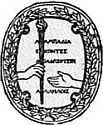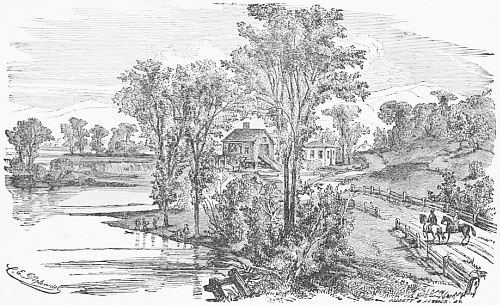Stuyvesant
A FRANCONIA STORY
By JACOB ABBOTT
ILLUSTRATED

NEW YORK AND LONDON
HARPER & BROTHERS PUBLISHERS
1904
Entered, according to Act of Congress, in the year 1853, by
Harper & Brothers,
In the Clerk’s Office of the Southern District of New York.
Copyright, 1881, by Benjamin Vaughan Abbott, Austin
Abbott, Lyman Abbott, and Edward Abbott.
 THE BOYS AT THE MILL.
THE BOYS AT THE MILL.PREFACE.
The development of the moral sentiments in the human heart, in earlylife,—and every thing in fact which relates to the formation ofcharacter,—is determined in a far greater degree by sympathy, and bythe influence of example, than by formal precepts and didacticinstruction. If a boy hears his father speaking kindly to a robin inthe spring,—welcoming its coming and offering it food,—there arisesat once in his own mind, a feeling of kindness toward the bird, andtoward all the animal creation, which is produced by a sort ofsympathetic action, a power somewhat similar to what in physicalphilosophy is called induction. On the other hand, if the father,instead of feeding the bird, goes eagerly for a gun, in order that hemay shoot it, the boy will sympathize in that desire, and growing upunder such an influence, there will be gradually formed within him,through the mysterious tendency of the youthful heart to vibrate inunison with hearts that are near, a disposition to kill and destroyall helpless beings that come within his power. There is no need ofany formal instruction in either case. Of a thousand children broughtup under the former of the above-described influences, nearly everyone, when he sees a bird, will wish to go and get crumbs to feed it,while in the latter case, nearly every one will just as certainly lookfor a stone. Thus the growing up in the right atmosphere, rather thanthe receiving of the right instruction, is the condition which it ismost important to secure, in plans for forming the characters ofchildren.
It is in accordance with this philosophy that these stories, thoughwritten mainly with a view to their moral influence on the hearts anddispositions of the readers, contain very little formal exhortationand instruction. They present quiet and peaceful pictures of happydomestic life, portraying generally such conduct, and expressing suchsentiments and feelings, as it is desirable to exhibit and express inthe presence of children.
The books, however, will be found, perhaps, after all, to be usefulmainly in entertaining and amusing the youthful readers who may perusethem, as the writing of them has been the amusement and recreation ofthe author in the intervals of more serious pursuits.